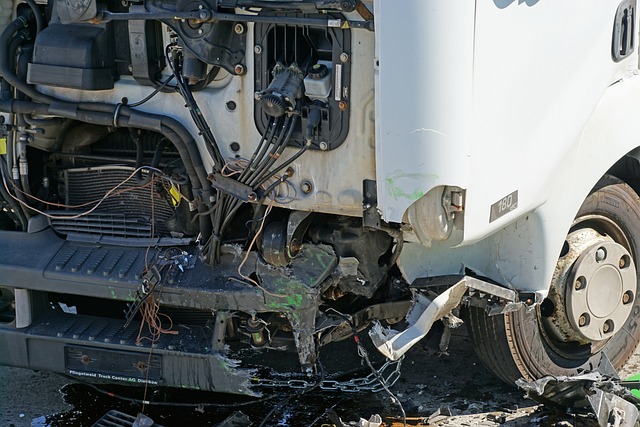Full coverage auto insurance provides drivers with comprehensive protection beyond basic liability, covering vehicle repairs/replacements due to non-impact events (comprehensive), accidents (collision), and additional risks like vandalism or natural disasters. It offers financial security, peace of mind, and lower deductibles, especially valuable for high-risk drivers and vehicles. Getting full coverage involves assessing needs, researching state minimums, comparing quotes, understanding policy details, and completing the application accurately.
“Uncertain about full coverage auto insurance? This comprehensive guide breaks down everything you need to know. We explore what full coverage entails, dissecting its key benefits and the types of damage it shields you from. Learn who stands to gain the most from this policy and how it compares to other auto insurance options.
Discover the step-by-step process of acquiring full coverage, ensuring you’re protected on the road. From understanding essential terms to choosing the right provider, this article is your go-to resource for making informed decisions regarding your vehicle’s security.”
Understanding Full Coverage Auto Insurance: What It Covers

Full coverage auto insurance is designed to protect drivers from financial loss in the event of an accident. It goes beyond the basic liability coverage, which only covers damage to third-party vehicles and medical bills for injured parties. Full coverage includes comprehensive and collision insurance, which can pay for repairs or replacement of your vehicle if it’s damaged or stolen.
This type of auto insurance also offers protection against various other risks such as vandalism, natural disasters, and roadside hazards. It ensures that you’re financially secured in case of unexpected events while driving, providing peace of mind on the road.
Types of Damage and Losses Included in Full Coverage

Full coverage auto insurance is designed to protect drivers from a wide range of financial losses related to their vehicles. This type of policy typically includes comprehensive and collision coverage, safeguarding against various types of damage and losses. Comprehensive coverage kicks in when your car suffers non-impact-related damages, such as theft, vandalism, or natural disasters like floods or wildfires. It helps pay for repairs or replacement of your vehicle, up to its actual cash value.
Collision coverage, on the other hand, covers damage resulting from accidents, including collisions with other vehicles, objects, or even self-damage if you drive off a cliff or into a body of water. This coverage can help pay for repair costs, rental cars while yours is being fixed, and even medical expenses if you or your passengers are injured in an insured accident. Together, these components of full coverage auto insurance offer comprehensive protection against unexpected events that could lead to significant financial strain on vehicle owners.
Advantages of Opting for Full Coverage Auto Insurance

Opting for full coverage auto insurance offers several significant advantages that go beyond just protecting your vehicle. Firstly, it provides comprehensive protection against a wide range of risks, from accidents to theft and natural disasters. This means you’re not just covered if you get into a fender bender; your policy can also help with significant incidents like carjacking or damage from severe weather.
Additionally, full coverage insurance can offer peace of mind knowing that you’re less likely to face substantial out-of-pocket expenses in the event of an accident. Many policies include collision and comprehensive deductibles, which significantly reduce your financial burden compared to having a higher deductible on a standard auto insurance policy. This is particularly beneficial for those who drive older or valuable vehicles, as it can help maintain their investment.
Who Needs Full Coverage Auto Insurance?

Everyone who owns a vehicle should consider full coverage auto insurance, but it’s especially crucial for certain drivers and situations. Young drivers, for instance, often face higher premiums due to their lack of driving experience, making comprehensive protection essential to shield them from overwhelming financial burdens in case of an accident. Similarly, if your car is still under finance, your lender may require full coverage insurance to protect their investment until the loan is fully paid off. Furthermore, certain areas or types of driving present higher risks; drivers living in regions prone to natural disasters like floods or earthquakes, or those frequently traversing high-crime areas, might benefit from the comprehensive protection that full coverage offers.
Comparison with Other Auto Insurance Policies

Full Coverage auto insurance is a comprehensive protection plan that goes beyond the standard policy offerings. Unlike basic liability coverage, which typically covers damages caused to others in an accident, full coverage includes additional protections for your vehicle and yourself. This means if your car suffers significant damage or is stolen, you’re assured of financial support through repairs or replacement.
When compared to other Auto Insurance options, full coverage stands out for its all-encompassing nature. While third-party liability insurance is a legal minimum in many places, it leaves the policyholder vulnerable to out-of-pocket expenses in case of an accident involving their own vehicle. Full Coverage, however, shields against these costs, making it a wise choice for drivers who value peace of mind and comprehensive protection.
How to Get Full Coverage Auto Insurance: A Step-by-Step Guide

Getting full coverage auto insurance is a process that involves several steps to ensure you’re adequately protected on the road. Here’s a step-by-step guide to help you navigate this process smoothly.
1. Assess Your Insurance Needs: Start by evaluating your specific situation and requirements. Consider factors like your driving history, vehicle type, and personal budget. Research state minimums for auto insurance coverage, but remember, these are bare-bones requirements; full coverage typically includes liability, collision, comprehensive, and personal injury protection (PIP) or medical payments coverage.
2. Get Quotes from Multiple Providers: Don’t settle for the first quote you receive. Shop around by visiting reputable insurance companies’ websites or using comparison platforms. Request quotes from various providers to ensure you’re getting competitive rates. Compare policies side by side, paying attention to deductibles, coverage limits, and any additional perks or discounts offered.
3. Choose a Policy That Suits Your Needs: Analyze the quotes and select a policy that aligns with your requirements. Ensure it includes the necessary coverages, such as liability for damages caused to others, collision coverage for your vehicle in case of an accident, comprehensive insurance to protect against non-collision events like theft or natural disasters, and PIP/medical payments to cover medical expenses.
4. Review and Understand Your Policy: Once you’ve chosen a policy, read the fine print carefully. Understand what’s covered, what exclusions apply, and how your deductibles work. Be clear about what happens in various scenarios, such as an at-fault accident or if your vehicle is damaged while parked. Knowing these details will help you make informed decisions and avoid unexpected gaps in coverage.
5. Complete the Application Process: Fill out the application form accurately and honestly. Provide all necessary information about your driving history, vehicle registration, and any previous insurance policies. Ensure your contact details are up-to-date for smooth communication from your insurer.
